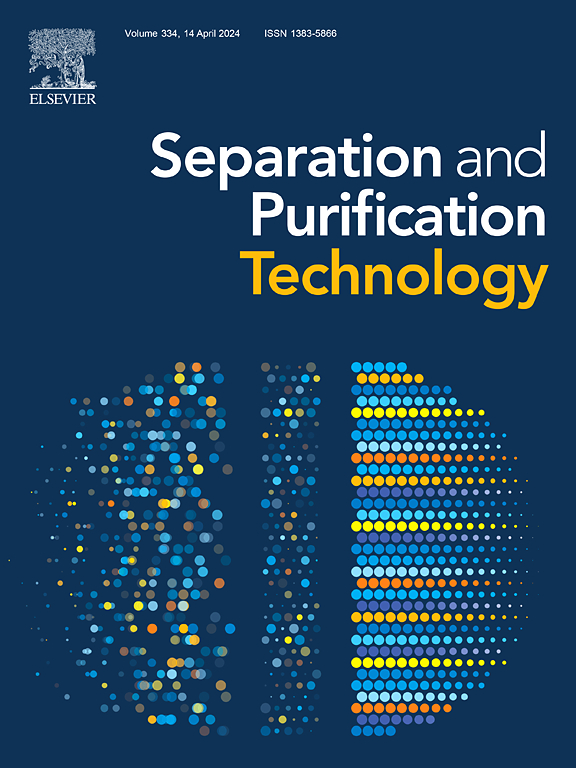Direct oxidation of ammonia to dinitrogen through persulfate activation by coal-based activated carbon: Selectivity and mechanism
IF 8.1
1区 工程技术
Q1 ENGINEERING, CHEMICAL
引用次数: 0
Abstract
Removal of ammonia nitrogen (NH4+-N) from water and wastewater with low C/N ratios by advanced oxidation processes (AOPs) is crucial for guaranteeing the safety of drinking water and preventing eutrophication in aquatic environment. Conventional AOPs tend to over-oxidize NH4+-N to nitrite or nitrate and potentially interfere with the water and wastewater matrix. Herein, we proposed a strategy for direct oxidation of NH4+-N to N2 through activating persulfate (PS) by coal-based activated carbon (AC) in the presence of MgO. In the AC/MgO/PS process, NH4+-N oxidation mostly occurred via non-radical pathways (1O2 and electron transfer). The high selectivity of direct oxidation of NH4+-N was due to the following four reasons: (1) MgO made NH4+-N exist predominantly in the form of NH3 in solution; (2) electronic shuttle function of AC enhanced the electron transfer from NH3/N2H4 to PS to form N2; (3) AC surface contains various functional groups, such as C=O, which may catalyze the conversion of N2H4 and NO intermediates to form N2; (4) sulfur components in AC reduced the nitrite/nitrate product to N2. AC/MgO/PS process could be used to oxidize NH4+-N in polluted groundwater. This work offers a new AOP for chemical treatment of NH4+-containing water and wastewater

求助全文
约1分钟内获得全文
求助全文
来源期刊

Separation and Purification Technology
工程技术-工程:化工
CiteScore
14.00
自引率
12.80%
发文量
2347
审稿时长
43 days
期刊介绍:
Separation and Purification Technology is a premier journal committed to sharing innovative methods for separation and purification in chemical and environmental engineering, encompassing both homogeneous solutions and heterogeneous mixtures. Our scope includes the separation and/or purification of liquids, vapors, and gases, as well as carbon capture and separation techniques. However, it's important to note that methods solely intended for analytical purposes are not within the scope of the journal. Additionally, disciplines such as soil science, polymer science, and metallurgy fall outside the purview of Separation and Purification Technology. Join us in advancing the field of separation and purification methods for sustainable solutions in chemical and environmental engineering.
 求助内容:
求助内容: 应助结果提醒方式:
应助结果提醒方式:


